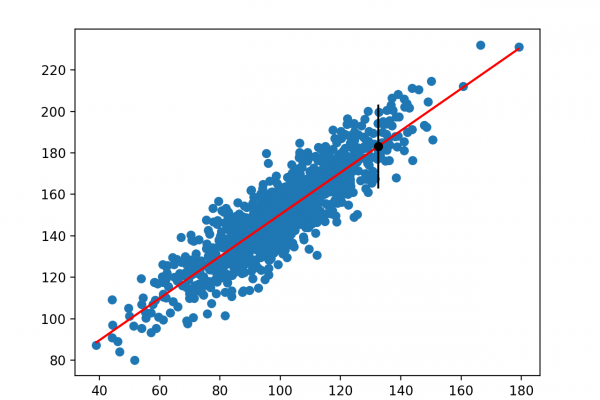Prediction Intervals for Machine Learning

Last Updated on May 1, 2020
A prediction from a machine learning perspective is a single point that hides the uncertainty of that prediction.
Prediction intervals provide a way to quantify and communicate the uncertainty in a prediction. They are different from confidence intervals that instead seek to quantify the uncertainty in a population parameter such as a mean or standard deviation. Prediction intervals describe the uncertainty for a single specific outcome.
In this tutorial, you will discover the prediction interval and how to calculate it for a simple linear regression model.
After completing this tutorial, you will know:
- That a prediction interval quantifies the uncertainty of a single point prediction.
- That prediction intervals can be estimated analytically for simple models, but are more challenging for nonlinear machine learning models.
- How to calculate the prediction interval for a simple linear regression model.
Kick-start your project with my new book Statistics for Machine Learning, including step-by-step tutorials and the Python source code files for all examples.
Let’s get started.
- Updated Jun/2019: Corrected significance level as a fraction of standard deviations.
- Updated Apr/2020: Fixed typo in plot of prediction interval.